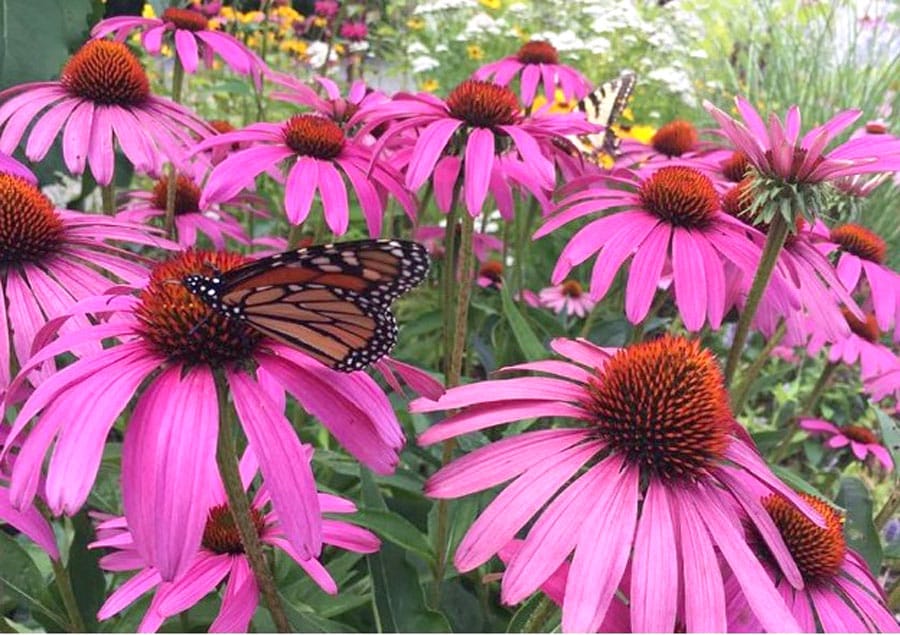WELLINGTON COUNTY – According to The Old Farmer’s Almanac, the dog days of summer are the 40 days beginning July 3 and ending August 11.
This is soon after the summer solstice in late June, which also tends to be the beginning of the worst of summer’s heat.
But that doesn’t mean it is time to hang up your garden trowel!
There are still myriad native plants out there providing a stunning visual display in the garden right now.
And these same plants are also the ones that help to nourish the pollinators, our beautiful winged friends including birds, bees and butterflies.
Late fall blooming native plants like New England aster (symphyotrichum novae-angliae) provide sustenance to monarchs and other migrating butterflies such as painted ladies, red admirals, and the question mark butterfly.
Goldenrod (solidago), also a late bloomer, mingles beautifully with asters in the fall garden. Together, they are an example of Mother Nature’s perfect complementary pairing of purple and yellow, two colours known to attract butterflies.
The oft-maligned goldenrod is actually a very important nectar source for pollinators as well.
Another guaranteed magnet for late season butterflies and other pollinators is the pale lavender cloud of blooms of anise hyssop (agastache foeniculum).
This low-maintenance flower thrives in dry summers like the ones we often have in Ontario. And it smells great too, releasing a sweet licorice fragrance when brushed against.
Purple “reigns” in the butterfly garden and purple coneflower (echinacea purpurea) is another stalwart choice.
The coned centre of these hardy plants provides a great landing platform for many winged beauties including great spangled fritillary and question mark butterfly.
Pearly everlasting (anaphalis margaritacea) is another standout for any butterfly garden. This native is actually a host plant for two lovely “ladies”: the caterpillars of both the American lady and the painted lady butterfly.
The clusters of striking white blooms that form on the top of the stems of this plant last throughout the gardening season.
Its compact and tidy habit allows it to mix well in front of taller wildflowers.
With the migratory monarch butterfly now considered an endangered species, there has been heightened interest in the welfare of this majestic creature.
The sole food source of its caterpillar is the milkweed plant.
To ensure the continued presence of monarch butterflies, consider including at least one of the 14 kinds of milkweed plants native to Canada in your butterfly garden.
For some, purposefully planting milkweed, asters, and goldenrod in the garden may require taking a bit of a cognitive shift.
Historically, we’ve come to know these plants that once filled abandoned fields as weeds.
But consider these clichéd truisms: gardening, much like art, is subjective; and beauty is in the eye of the beholder. For, as the poet Ian Emberson said: “A weed is a flower in the wrong place.”
And, according to Winnie the Pooh, “weeds are flowers too, once you get to know them.”
For more information about creating habitats for butterflies, check out the Butterflyway Project, a volunteer-driven campaign that aims to create networks of butterfly-friendly habitat in communities throughout Canada as part of the David Suzuki Foundation (www.davidsuzuki.org/butterflyway).
Written by Janine Robertson, Butterflyway ranger and Guelph-Wellington Master Gardener




